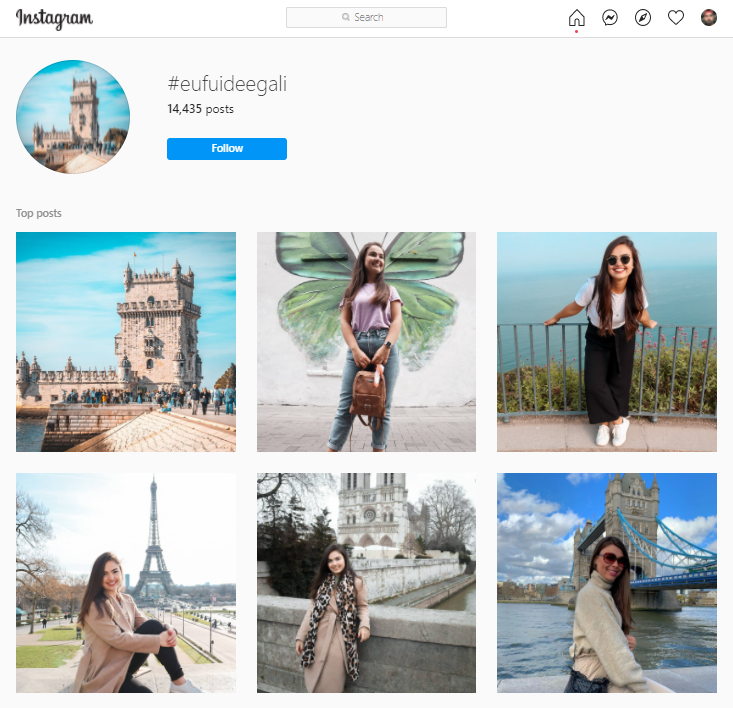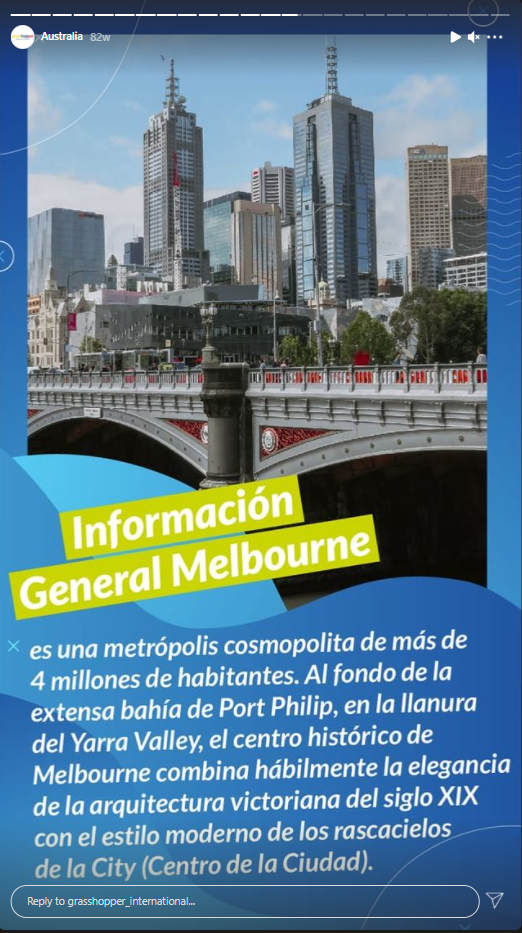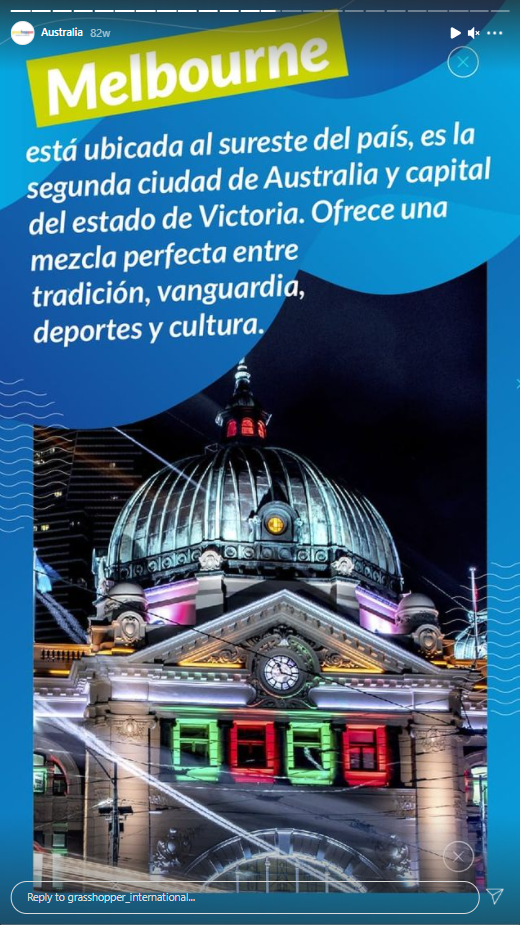
Discover English
English School in Melbourne, Australia
11 Tips for building a social community with your current and future clients.
Germano vieira
July 7, 2021 – 7 Min. Read
As education consultants and agent managers, you already know that there is a lot of potential for using social media in higher education. Social media is a great avenue to raise an agency’s profile, drive enrolment, and boost future student engagement.
Whether you choose to invest a million dollars or only 50 cents in your marketing budget, the aim is to spend it right. Many agencies are simply choosing to invest in new tactics rather than flashy marketing campaigns. Their tactic of choice? Social media.
Widespread access to the internet and digital media has completely transformed the education sector. Facebook today has more than 2.3 billion monthly active users, while Instagram now has over 1 billion monthly active accounts. TikTok is also growing at a great speed. With social media platforms becoming more popular everyday, the way we consume information is also changing significantly.
This can turn out to be an advantageous situation for marketers in the education sector. When implemented correctly, social media marketing can help create online communities, increase interactions, engage more students, and form a global reputation.
In this article, I present you with 11 inventive social media marketing strategies used by agencies and schools around the world to increase reach and engagement with their social channels while fostering a sense of togetherness.
1. Start an education marketing campaign
A social media campaign is a marketing effort that aims to increase interactions with a target audience and engage more users.
Campaigning on social media is a little different from everyday content posting. It has a more strategic approach and focuses on a single goal across all social media channels.
For example, Vancouver Island University (VIU) started a social media campaign on Instagram with the aim of creating a follower base that loves the outdoors and an eclectic lifestyle.
To give direction to their follower base, VIU started a hashtag called #ilearnhere. By sticking to a theme and creating a hashtag, VIU’s Instagram account was able to attract many like-minded individuals quickly.
2. The user-generated content advantage
A useful method for agencies to increase interactions and reach on social media is to allow existing students or even past clients to get involved with your social media accounts.
Students nowadays are already very active on social media platforms, so why not take advantage of this for your social media marketing strategy?
Egali #eufuideegali is a great example of creating a hashtag to get students involved. Source: Instagram
For example, you can create a hashtag for your institution or for all the major events that are happening there such as orientation/preparation for travel, first day in Australia workshops, how to get your first job overseas, etc.
Encourage students to promote these hashtags and watch your agency community build itself. You can also give them a chance to be featured on the institution’s official page.
3. Create social media groups
Social media groups can help you connect with the right audience.
For example, you can have separate Facebook groups that cater to smaller audiences within your agency community such as past-student groups, pre-departure groups, sports groups, groups for parents of students, and so on.
Groups can be a good place to hold discussions, share announcements, and interact with community members.
4. Be platform-specific
Every social media platform has its unique advantages for agencies. For example, you can connect with students and future leads while building relationship networks on Facebook and LinkedIn.
Instagram and Snapchat can be used for posting photos and videos while discussions can be carried out on platforms like Quora.

The Brazilian CI Intercambios does an excellent job promoting its services to clients through Pinterest.
Pinterest and Flipboard can be used for increasing brand awareness. Meanwhile, Medium and WordPress can be used for publishing blog content for your network.
You may not be present on all the social media platforms out there, but you can take advantage of the unique features of whichever channels you are using.
5. Post audience-specific content
The main goal of your social media strategy should be to deliver content that is relevant to your audience. Hence, agency social media managers should think about getting separate accounts for different aspects of student life.
For example, an agency can have news to share from different cities/countries (although we all know that Melbourne is the best city, right? 
Somebody who wants to see more Australian news might not be interested in what is happening in Ireland.
So, if you create separate accounts for each network or area of interest within the student body, your content will be better tailored to the specific audience that follows each feed.
6. Go live!
Real-time sharing and interactions over social media platforms are on the rise—so going live and engaging with your followers can be a great way to get on this trend.
Live streaming is a good way to build a consistent social media presence. It also allows your audience to gain some valuable insights about your institution.
You can share events and workshops that are held at your education partners’ campuses (e.g., Discover English campus in Melbourne. You can even hold live Q&A sessions for prospective students.
7. Share via Stories
Creating and sharing social media stories that combine videos, photos, captions, and filters is now easier than ever. This feature is available on most major social media platforms like Snapchat, Instagram, TikTok and Facebook.
You can use geotagging, filters, and visual media to show the location of your branches, the different schools you work with in different countries/cities, or events that are happening nearby.
Grasshopper International from Colombia, with its over 10k followers, highlights its offered branch locations with its Instagram Stories. Source: Instagram
Many agencies’ social media managers are already using stories to great effect.
8. Appoint students as ‘online tour guides’
Current students are one of the most relatable, trustworthy, and authentic sources of information for prospective students.
Hence, if you can ask them to give a glimpse of how everyday student life on campus looks, just like a campus tour guide, you can create highly engaging content for your audience.
Asking students to help out as virtual tour guides also adds a reality angle to your promotions.
For example, the students at Discover English take to Snapchat and Instagram stories to give a tour of their residential life and show the on-campus resources.
9. Create brand awareness
Was your student selected to be the student of the month at one of your partner institutions? Share that news on Twitter!
Captured an image of Melbourne, Sydney or Hobart at sunset? Upload that image on Instagram!
Basically, show off what you and your partners have to offer. Your institution, like any business, is a brand and you have to create brand awareness to reach prospective students and drive culture through social networking.
10. Automate repetitive tasks
In order to maintain a consistent presence on social media, it is important that you post content frequently and regularly.
Scheduling your posts with a content calendar is an effective way to keep up your publishing frequency.
A content calendar gives you control over your publishing strategy, as it allows you to focus on the big picture rather than just day-to-day posting.
11. Use social media analytics
After you have implemented best practices for promoting your content, it’s time to analyse what you have been doing and see what is working for you and what is not.
For example, you can analyse your followers and their characteristics. You can also gain insights into your posts and content such as what kind of posts are shared the most, what kind of posts get the least likes, or which platform works the best for you. By choosing the right analytical tools for your social media strategy, you can optimize your performance across social channels much more easily.
Social media is a competitive environment. Hence, it is important for social media managers to experiment, track, and analyse which content strategy is the most effective for them.
Your digital marketing strategy plays an important role in maintaining and growing the reputation of your institution.
These were just a handful of strategies for promoting your agency and magnifying student interactions on social media. To find which tactics work best for your agency, you simply need to try them out and see what works.
© 2020 All Right Reserved. Discover English. CRICOS: 03262J




